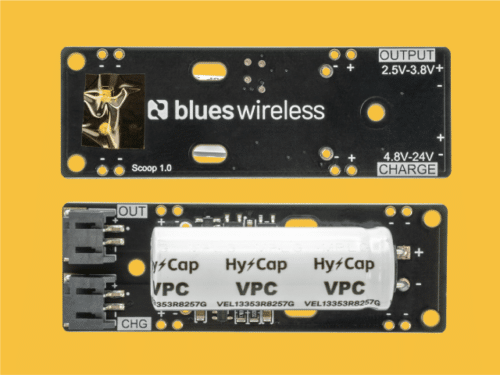Blues’ backup board, driven by capacitors, outshines LiPOs with enhanced temperature adaptability, minimal self-discharge, and eliminates lithium shipping complexities.

Blues has introduced Scoop, a capacitor-based backup power add-on board. Unlike Lithium Polymer batteries (LiPOs), this capacitor functions across broader temperature ranges, boasts a lower self-discharge rate, and sidesteps the shipping restrictions associated with lithium batteries. The Scoop is engineered to ensure consistent power delivery over brief intervals. It features Japan Solderless Terminal (JST) battery connectors tailored for Adafruit-compatible packs and includes a J1 charge connector. The output voltage varies between 2.5 to 3.8 volts and comes with four sets of male header pins mounted through-hole. A standout advantage of Scoop is its power outage detection capability. This is vital for essential operations where any power interruption can cause significant disruptions. Using Scoop, your IoT device can transition to an alternative power source, recognize the energy shift, and promptly notify you of the power disruption.
The Scoop unit can be energized through its charge connector or header pins, accommodating an input voltage between 4.8V and 24V. Its output connector supplies a voltage between 2.5V and 3.8V, rendering it compatible with various devices. When assessed with Notecard, Scoop sustains up to 200 connections to Notehub on a complete charge. This performance varies based on the local wireless coverage and the volume of data transmitted, culminating in nearly 4 hours of uninterrupted operation.
Some of the key specifications of Scoop include:
- Capacitor: Lithium Ion 250F 3.8V -10% +30%
- Connectors: JST PH 2P M SIDE ENTRY Surface Mount
- Charge Connector: Accepts 4.8V-24V
- Output Connector: Outputs 2.5V-3.8V
- Header Pins: 4 pairs of header pins
The Scoop is equipped with a 250 Farads Lithium-ion Capacitor (LIC), two JST connectors, and four header pins, offering versatile connection options.
For more information, click here.







